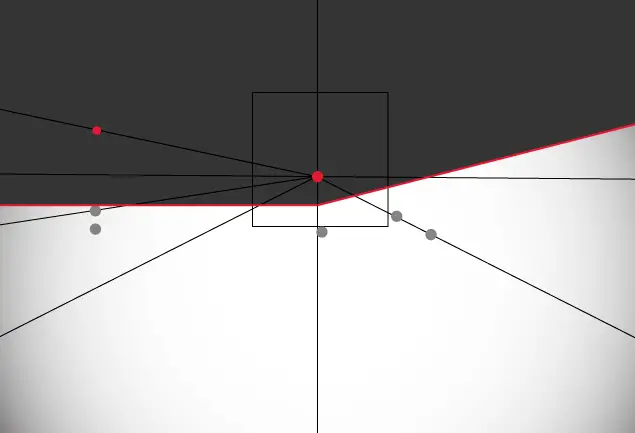
How to adjust car headlights properly
Believe it or not, proper headlight adjustment is important in order to have good visibility at night. It wasn’t just a matter of pointing the beams in front of the vehicle; the headlights should keep to certain spots on the road too, so drivers of oncoming vehicles won’t be blinded by the glare coming from your headlights. Properly aligned headlights are important so conditions for driving are safe not only for you but also for other motorists.
In the past, adjusting headlights in order to align the light beams properly on the road ahead was a pretty complicated process. Not only did you need the proper tools (usually a 10mm box or open wrench, but some cars may warrant a screwdriver instead), you also needed to make sure that all the tires were inflated properly, and that the shock absorbers were in proper working order (all these things also for the latest-model or current cars, but we’ll get to that later).
While baggage in the trunk also affects the vehicle’s orientation to the ground, it is not very often that cars carry a full cargo load in the baggage compartment so it isn’t really that necessary to adjust the headlight angles with a full load. However, if you’re kind of obsessive-compulsive about this kind of thing, just go ahead and adjust them if you want.
First of all, you should check if your headlights do need adjusting. Ask yourself, is the road not illuminated properly when you’re driving at night? Can you see reflective road signs easily? Do oncoming drivers flick their lights to high beam when they approach you even though you’re using low beams? All these are signs that your headlights are not aligned properly.
To perform a basic adjustment, you will need the correct tools, masking tape, and a tape measure. You can then follow these steps:
Step 1: Park your car on level ground facing a wall.
Step 2: Locate the headlight adjustment bolts or screws. These are located on the top of the headlights and on the inboard side of the headlight housing. If you are having difficulty finding them, check your owner’s manual. Also, male sure you use the proper tools in order not to damage the headlamp adjustment bolts or screws.
Step 3: Turn the low beams on, and mark the horizontal and vertical centerlines of the light pattern on the wall. If the left and right horizontal markers are not level with each other, use the middle of the two measurements as the level reference point. Also mark the centerline of the vehicle. This is important when you are adjusting the headlight beams from side to side.
Step 4: Back the car up around 8 meters then switch to high beams. The beam’s brightest spots should be around two inches below the horizontal tape marker and two inches to the right of the vertical marker. If this is not the case, adjust the alignment by turning the blots (or screws) clockwise or anti-clockwise, respectively.
Step 5: Take the vehicle for a test drive and check if you are satisfied with the way the road ahead of you is illuminated. Be sure to take note if oncoming drivers high-beam you as they approach. This means that your car’s headlights are still pointing too high and you will have to make further adjustments.
For more information on this, you can check the following link, which includes a headlight adjustment chart: https://carfromjapan.com/article/car-maintenance/aiming-headlights-how-get-proper-alignment/
For later-model or current cars, especially those from premium car marques like Mercedes Benz, BMW, Cadillac, and Volvo, headlight adjustment isn’t so difficult. Vehicles like these are usually equipped with electronically-operated adjustment systems, which means you can adjust the headlight beams from the driver’s seat, without you even having to get out of the car.
The most common is the headlight levelling system of which there are two kinds, static and dynamic. The static type only corrects changes in the car’s inclination relative to the road. This is caused by changes in load.
For those cars using projector headlamps with xenon high-intensity discharge lamps, they are almost always equipped with the dynamic type of automatic headlamp leveling systems, since these are required by law in most states or countries. This kind of system adapts the angle of the headlights to the position of the road automatically. The driver doesn’t even have to do anything; the car’s electronic management system does everything on its own, from calculating the load to changes in acceleration, braking, and speed.
Another new feature in today’s cars is adaptive headlights. These are designed to make driving at night much safer, especially when driving on curvy roads and on rolling hills. Compared to standard headlights that just point the beam ahead, adaptive headlights follow your steering input, pointing the light beams to the direction in which the steering wheel turns.
Adaptive headlights are also very useful when driving on rolling hills or streets that go up and down regularly. When a car with regular headlights reaches the top of a hill, the light beams point upwards. When this happens, drivers of oncoming vehicles are usually blinded. Adaptive headlights avoid this situation by pointing the beams up or down automatically, depending on the position or inclination of the vehicle.
While drivers of older cars may find it difficult to adjust their headlamps properly, working on their cars personally may give them a great sense of satisfaction. On the other hand, while owners of newer cars may have no trouble adjusting their headlights (some don’t even have to do it themselves; the car does everything automatically), problems will certainly crop up when the car’s electrical systems encounter a fault, such as a drained battery.
All things considered, there are always pros and cons to each side, but one thing remains common for both: headlight alignment is very important not just for the safety of the driver, but also for the safety of other motorists and passers-by.

Headlights are automotive jewelry. Correct fitment coupled with the right choice of technology will turn your vehicle into a shining gem.
Official sources of fitment information – https://sylvania-automotive.com and https://www.automotivebulbfinder.com/philips/
